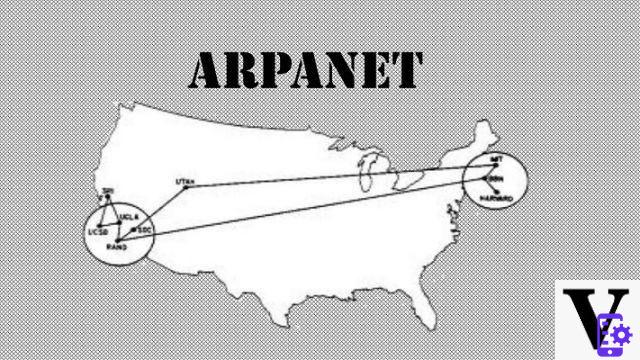
Today, when we talk about Internet - sometimes even confusing it with the Web, but that's another story - we may get the impression that it is something ethereal and intangible. But in reality it is something very concrete: of course, wireless networks and devices such as laptops and smartphones can give us this impression, but the Internet is still very similar, in many respects, to what it was in its infancy, namely a series of interconnected computers exchanging packets. And behind what is arguably the largest and most extensive project ever undertaken by humanity is a military initiative by the Years' 60, Called ARPANET. But let's take a step back.
READ ALSO: Netscape and Mozilla: the story of a project capable of revolutionizing the web
The principle behind ARPANET
It is first of all important to understand the necessity that led to the creation of this network. In 1958, in the midst of the Cold War, the United States they founded the research institute HARP (then DARPA). Its mission was to find innovative technological solutions to a number of (mainly military) problems. Among these was to create a telecommunications system sure, practical and especially robust.
Until then, in fact, computers were already partially connected and able to communicate with each other, but in a way similar to telephones, i.e. through the circuit switching: an operator (first) or an automated circuit (later) had to connect the two users directly, creating a dedicated communication channel. This system, although functional, however, prevented more than two users from using the same line at the same time, limited the speed of the connections and presented a vulnerability: passing all the lines through a central node, in charge of this switching operation, created a critical point in case of breakdowns or enemy attacks.
The solution to this problem was the transition to packet switching: by 'enveloping' the data to be exchanged in a container with the sender, the recipient and other useful information written, it was possible, for several users, to use the same communication line or to send one's message through more than one way, without the need each time to have a dedicated channel. This method of communication solved most of the problems of the circuit counterpart: computers no longer had to wait to be directly connected to each other to communicate, and in the case of a line attack, messages could be easily redirected through other nodes. . There was the problem of having to know in advance the path on which to route your message, but given the very low number of computers initially connected, the advantages far outweighed the drawbacks.
More and more connected
To propose the system for this new network, called ARPANET, it was Steve Crocker, together with Steve Carr e Jeff Rulifson, in a document published on 7th April of 1969. To be connected were initially only quattro computer, but the network experienced rapid expansion. with more and more research institutes and machines connected year after year.
The expansion, also featuring very different computer models, required the invention of the protocol TCP / IP, still used today: it was basically a set of rules for packing and sending data over the network, in a standardized way regardless of the machine model used. Among the other innovations of that era, more or less still present today, we find theemail (1971), a system to control other computers remotely called telnet (1972) and the file transfer protocol FTP (1973).
From the initial 4 knots, we step to 13 by the end of 1970 and 40 in September of 1973, with even more computers, both university and government, actually connected. In 1981 it had come to 231 computer, with a new connection every approx twenty days. More and more people outside the military connected to the network, leading the latter to move to their own dedicated network, called MILNET, and to let that ARPANET grow as a civil and international project.
Local networks, connecting to ARPANET, became part of the 'network of networks' that today we know as Internet. With the spread in the 80s of personal computer, the spread also went outside the institutions and universities. The Internet continued to grow independently even as the original ARPANET infrastructure was decommissioned, the 28 February of 1990.
Many aspects of the Internet, including protocols, technologies and applications, have changed since then, but the basic concept has remained the same: many computers, now billion, able to communicate with each other thanks to a standardized language and a capillary network. So if today you can stream your favorite series, watch kitten photos or even just read this article, you know how it all started.
[amazon_link asins = 'B00VVHONRM, B07HNRTZY6, B00VFIWKNG' template = 'ProductCarousel' store = 'gamspri02-21 ′ marketplace =' IT 'link_id =' 5f42bf99-f540-49a5-bb9c-4563bdfdfCought by 10. ARPANETMappa by 1973. By ARPANET - ARPANET, Public Domain) Map of ARPANET 1974 (By Yngvar - Own work, based on notes and recollections from 1974, Public domain) Map of ARPANET 1977 (By ARPANET - The Computer History Museum ([1]), en: File: Arpnet-map-march-1977.png, Public domain) Tagsarpanet computer internet usa ARPANET: the history of the Internet before the Internet



















![[Review] Samsung Powerbot VR7000: the robot vacuum cleaner from Star Wars](/images/posts/6bc44de38605b5c0fa12661febb1f8af-0.jpg)





